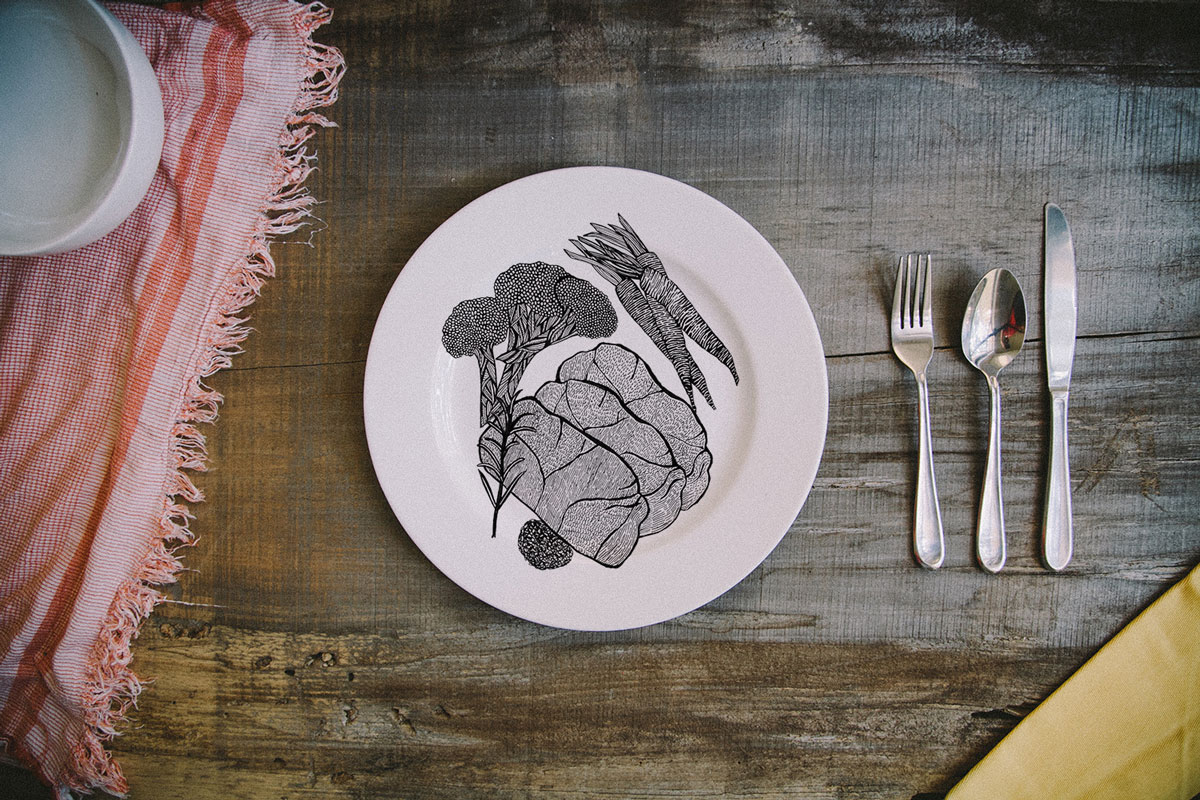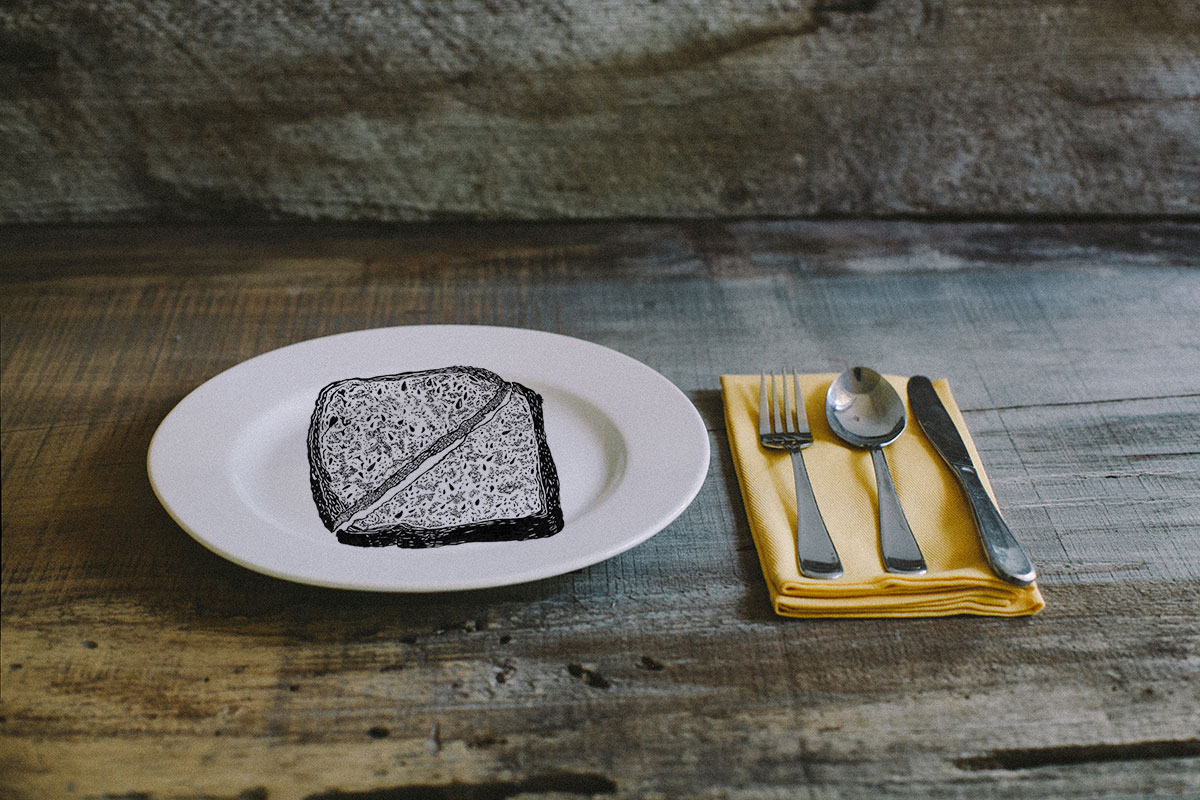Article
The Inheritance of Food Traditions
Words by Danica van de VeldePhotography by Joe GomezIllustrations by Hannah Rampley
“Most of our childhood is stored not in photos, but in certain biscuits, lights of day, smells, textures of carpet.”
This tweet, one of many from contemporary philosopher Alain de Botton, is particularly resonant for the manner in which it sheds light on how the senses of the everyday are absorbed into our comprehension of childhood. Indeed, taste is one of the most intensely felt senses affecting the faculty of memory. A number of scientific studies have examined the nuanced relationship between taste and memory. Although I have no scientific inclination whatsoever, the link between one’s palate and perception is something with which I have a strong identification. When I think of my childhood I remember the taste of cinnamon, which my mother would sprinkle on warm pieces of buttered toast, and lamb roasts, heady with the accompanying scent of my grandfather’s gravy. When I think back to a family vacation in Greece, where I was introduced to my cultural heritage, I have a hard time recalling exactly where we went and what we did, but I can still remember what we ate. My first taste of moussaka and ouzo is still present in my memory even though this trip took place 19 years ago. In my mind, these flavours converge on a constellation of interlinked concepts: food, recollection, family and heritage.
Naturally, the process of preparing and eating food is not simply about sustenance, but also connection and kinship. For many of us, our family dining-room table was where we were initially socialised and where we began to develop our own sense of taste – a space where we learnt not only the skill of how to interact over food, but also what we prefer to eat. Often when I have been a dinner guest of some friends, I have wondered where they learnt to cook the dish they served. Sometimes it is as simple as referring to a well-loved and dog-eared cookbook, but at other times it is a far more intuitive process based on hours spent observing a relative in their kitchen, quietly absorbing recipes that, while often unassuming, become imprinted into our family histories. In these instances, food is a necessary and tangible connection to the past.
I learnt to cook from my mother, who holds a plethora of recipes as a result of hosting dinner parties and an obsession with baking sweets and desserts. One of her traits that has surprisingly benefited me in the kitchen is her inclination to hoard. Growing up, the bookcase in our family home was not only heaving with Margaret Fulton cookbooks from the seventies, but also files full of recipes lifted from magazines and exercise books wrapped in brown paper with notes in my mother’s cursive handwriting dating as far back as her home economics classes in high school. New York-based food blogger and writer Saer Richards was also introduced to the joys of cooking by her mother. Her bread pudding and roast dinner, as well as her signature trifle dish, owe much to observing the activities in her childhood kitchen. Richards’ Jamaican parents ensured that she and her siblings were well versed in cooking skills, producing a family bonded by a “mutual love of food.” Her colourfully mixed Scottish, Cuban and Indian heritage, combined with her London upbringing, undoubtedly plays a role in the dishes that continue to be produced in her home kitchen, evidencing how our backgrounds play a subtle part in what we cook.
In posing the question of how one’s cultural background impacts on what people prepare in the kitchen, I originally spoke to private caterer Joanna Hammill who was born in India to Anglo-Australian parents. Although she completed a Cordon Blue course in London, it is her mother, her grandmother and the cook her family employed in India who have left the biggest mark on her approach to food. Counting her experiences in India as having “coloured [her] cooking and eating habits”, as well as her keen interest in other food cultures, she continues to cook the dishes she consumed as a child and, most importantly, she is passing these recipes and techniques on to her own children. Significantly, Hammill also articulates the passing of food traditions, such as the Sunday roast dinner with her family and the preference for fresh food, as a form of “inheritance.” For Hammill, food is not only the means by which she makes her living, but also what ties her family history together.
Ai-Ling Truong, an Australian food curator and blogger of Chinese Vietnamese decent, is a perfect exemplar of a person benefiting from the wealth of food knowledge passed down by her parents. As the daughter of a chef who owns his own Vietnamese restaurant, Truong learnt to cook later in life when she moved out of home and was faced with the prospect of no longer being able to enjoy her parents’ cooking on a daily basis. While her parents taught her Chinese and Vietnamese cuisine, Truong has extended her food credentials by using cookbooks to extend her skills, documenting her experimentations on her blog Food Endeavours of the Blue Apocalypse. Despite her forays into a number of different cultural food styles, it is the traditions of her family to which she returns. Her family dedicates most public holidays – a rare occasion when they are all free – to dumpling making sessions when they fill, fold and cook hundreds of the little morsels. And the one thing that remains constant in Truong’s food calendar is that she journeys home to have dinner with her parents every Monday night: “we catch up over food, we bond over food, we share food together.”
Indeed, for many of us, food is at the centre of most gatherings. I have eaten many a meal in the home of married couple Moira McFarlane and Chris Lenney. In contrast to other home cooks I have spoken to, their approach to composing the menu for their everyday meals and family gatherings is less concerned with the past than with reinventing and remaking restaurant dishes at home. Rather than revisiting the “very plain” Scottish food of her youth, McFarlane is predominantly focused on mastering French cuisine. While neither she nor Lenney has any specific recipes from their childhood that they now draw on, they are creating their own traditions and claim that they “never invite family or friends without it involving food.” Given that McFarlane and Lenney have each brought their own families to their marriage, it seems more than apt that they are forging new traditions to suit their combined families. They highlight that, amongst the tried and tested, we should also employ different rituals and practices to create new food memories.
The intimate connection between food, memory and family is one that cannot be underestimated. I return to a comment made by Richards: “I start every Sunday with a trip to the local farmers market – chatting with the vendors, picking the best seasonal produce and plotting my meals for the week. I often spend four, five, even in excess of six hours cooking: Dinner, pudding, concocting drinks – it’s the kind of Sunday I’ve lived since I was a little girl and I wouldn’t have it any other way.” Richards’ perpetuation of the Sundays of her childhood tells us that there is something comforting in the recipes and traditions that are handed down to us like family heirlooms – they remind us of where we have come from and where we belong.




